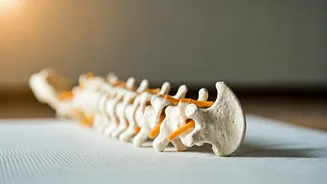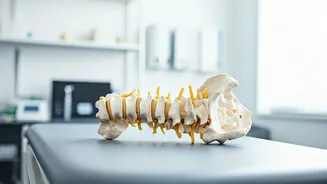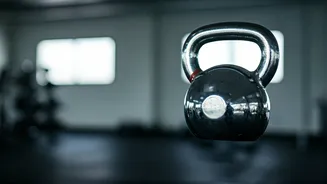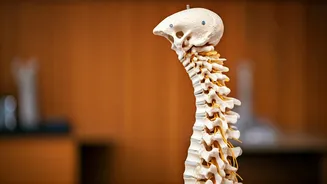Gentle Pelvic Tilts
Pelvic tilts are an excellent starting point for anyone experiencing back pain, focusing on strengthening the abdominal muscles and gently mobilizing the spine.
To perform a pelvic tilt, lie on your back with your knees bent and feet flat on the floor. Now, gently tilt your pelvis upwards, flattening your lower back against the floor, and hold for a few seconds. Then, arch your lower back slightly, allowing a small space between your back and the floor. This movement enhances spinal flexibility and strengthens core muscles, contributing to improved posture and alleviating strain on the lower back. Performing several repetitions of pelvic tilts can gradually reduce back pain while enhancing core stability. Remember to breathe deeply throughout the exercise to maximize its benefits and avoid holding your breath, which can increase tension. Start with 10 repetitions and gradually increase as your strength improves.
Knee-to-Chest Stretches
This stretch directly targets the lower back muscles, offering quick relief from tightness and promoting relaxation. To perform knee-to-chest stretches, lie on your back with your knees bent and feet flat on the floor. Gently bring one knee towards your chest, clasping your hands around the knee. Hold the stretch for about 20-30 seconds, feeling the gentle pull in your lower back. Repeat with the other knee, and then bring both knees to your chest for a deeper stretch. This exercise not only eases muscle tension but also improves circulation in the lower back region, aiding in the healing process. Breathing deeply throughout this exercise can enhance its effectiveness by promoting relaxation and oxygenating the muscles. It's beneficial to perform this stretch daily, particularly after periods of prolonged sitting or standing, to maintain flexibility and prevent back pain.
Kneeling Back Extension
Kneeling back extensions provide a counteraction to forward-leaning positions, helping to extend the spine and alleviate compression. To perform this exercise, start on your hands and knees, ensuring your hands are directly beneath your shoulders and your knees are beneath your hips. Gently arch your back, allowing your stomach to move towards the floor, while looking up towards the ceiling. Then, round your spine, tucking your chin towards your chest, and allowing your back to round towards the ceiling. This flowing movement helps increase spinal mobility and flexibility, providing a gentle massage for the back muscles. Coordinating your breath with the movements enhances the exercise's effectiveness, promoting relaxation and reducing muscle tension. This exercise can be particularly helpful for those who spend long hours sitting or engaging in activities that cause a hunched posture. Repeat this exercise for several minutes, focusing on smooth and controlled movements.
Double Knee Hugs
This stretch is effective for easing lower back pain and improving spinal alignment. To do double knee hugs, lie flat on your back, knees bent, and feet flat on the floor. Bring both knees towards your chest, clasping your hands around your shins. Gently pull your knees closer to your chest, feeling a comfortable stretch in your lower back. Hold this position for approximately 20-30 seconds. This exercise decompresses the spine, reducing pressure on the discs and nerves, which helps alleviate pain. It's crucial to ensure that you are comfortable throughout the stretch and avoid forcing your knees too close to your chest. Maintaining proper form and breathing deeply during this exercise allows for optimal relaxation and enhanced benefits. Regular practice of double knee hugs can improve flexibility and reduce the frequency and intensity of back pain.
Back-Extension Exercise
Back extensions offer a proactive approach to back pain, strengthening the muscles that support your spine. Begin by lying face down on the floor with your hands under your forehead. Slowly lift your upper body off the ground, using your back muscles, while keeping your lower body on the floor. The movement should be slow and controlled, focusing on engaging the back muscles without straining them. Gradually lower your upper body back to the starting position. This exercise strengthens the erector spinae muscles, which are crucial for maintaining proper posture and preventing back injuries. Start with a few repetitions and gradually increase the number as your strength improves. Combining back extensions with other exercises can create a well-rounded approach to back pain management. Remember to listen to your body and stop if you feel any sharp pain. Consistent practice of this exercise helps build strong back muscles, reducing the risk of pain and promoting a healthy spine.











